Understanding the Implications of Drinking Every Day
Drinking alcohol every day is a common social practice for many, but it carries significant health, psychological, and social risks. While moderate alcohol consumption may be acceptable for some, chronic daily drinking poses serious concerns. This article explores the short-term and long-term effects of daily alcohol use, the signs of potential dependence, and strategies for reducing health risks.
Health Risks Associated with Daily Alcohol Consumption
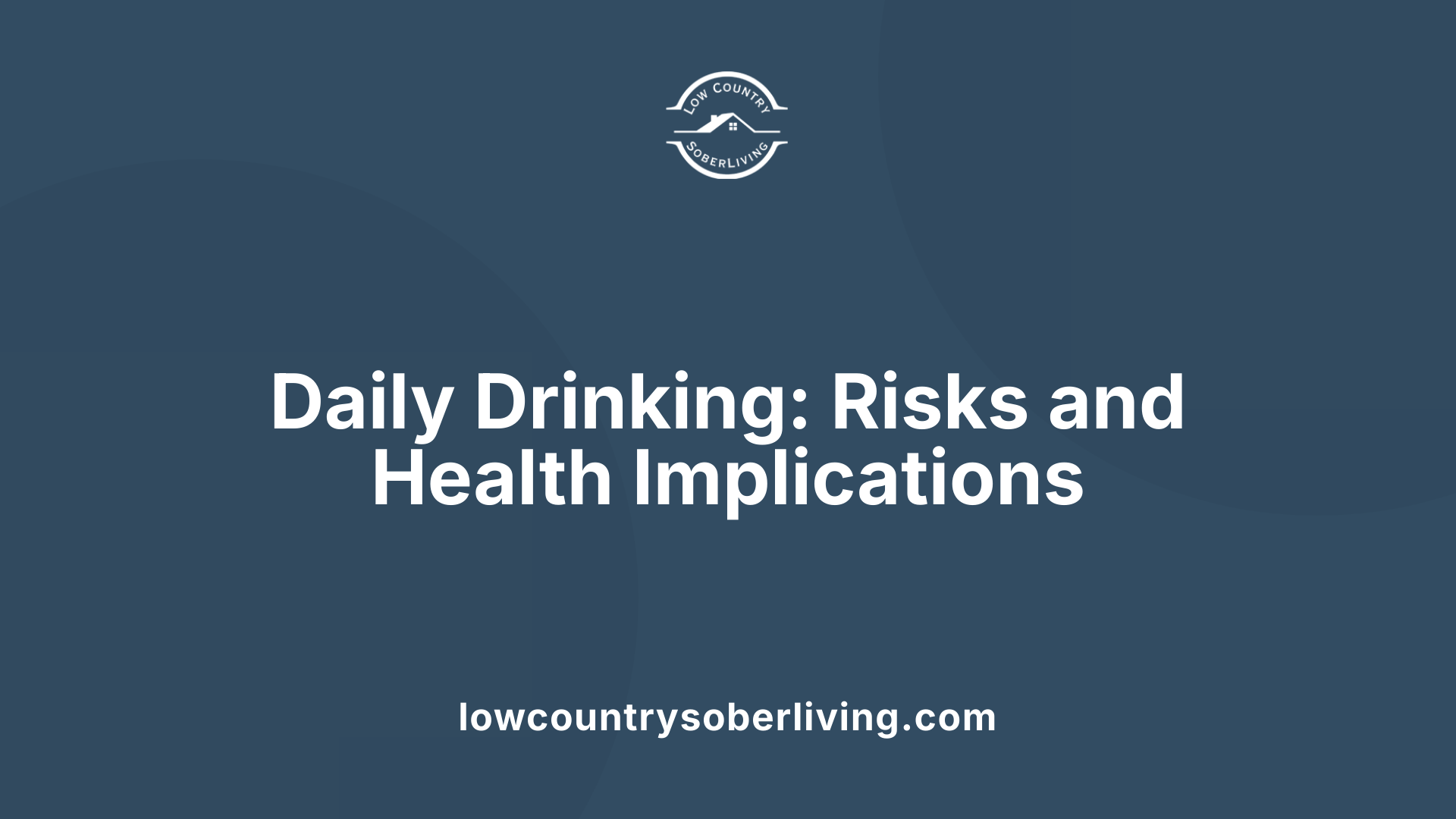
Are daily drinks normal?
Drinking alcohol every night is not necessarily normal or healthy. Moderate alcohol consumption—up to one drink per day for women and two for men—can sometimes offer minor cardiovascular benefits. However, exceeding these guidelines consistently over time elevates health risks significantly.
Frequent nightly drinking beyond moderate levels may suggest problematic or risky drinking habits. This pattern can lead to serious health issues, including liver disease, heart problems, and dependency. Recognizing personal tolerance and adhering to recommended limits helps reduce potential health harms. Generally, occasional or moderate drinking is considered safe for most adults, but daily heavy or binge drinking is not advisable for maintaining long-term health.
Is it harmful to drink alcohol daily?
Increased health risks are associated with daily alcohol consumption, especially when intake surpasses recommended guidelines. While some studies suggest that moderate drinking might benefit heart health slightly, the overall risks—including various cancers, stroke, and premature death—tend to escalate with higher consumption.
There is no completely safe level of alcohol; even small doses can raise the risk of certain cancers, such as breast and colon cancer. Guidelines from health authorities typically recommend limiting intake to no more than 1-2 drinks per week for adults. The safest approach to protect health is to limit or abstain from alcohol altogether, especially on a daily basis.
What happens if a person drinks alcohol every day?
Consistent daily drinking, particularly in larger amounts, can cause numerous health problems. Long-term effects include liver damage—fatty liver, hepatitis, and cirrhosis—and increased cardiovascular risks like high blood pressure, irregular heartbeat, and stroke.
Cognitive and mental health issues are also common, including memory impairments, depression, and anxiety. Daily alcohol use increases the risk of developing alcohol dependence, which involves physical dependence and withdrawal symptoms such as shakiness, sweating, nausea, and intense cravings.
Health risks extend to a higher likelihood of several cancers, including those of the liver and breast. The immune system becomes weakened, making the body more vulnerable to infections. Furthermore, alcohol's impact on life habits can lead to relationship strain, legal issues, and financial problems.
If someone is concerned about their drinking habits or experiences difficulties in stopping, professional support such as detox programs, counseling, and support groups can be highly beneficial. Addressing daily alcohol use early improves health outcomes and reduces long-term risks.
Are daily drinkers considered alcoholics?
Not everyone who drinks daily is classified as an alcoholic, but persistent daily drinking can sometimes indicate alcohol dependence when certain signs are present. Diagnosis of alcohol use disorder (AUD) involves meeting specific criteria like craving, loss of control, tolerance, withdrawal symptoms, and prioritizing alcohol over responsibilities.
Some daily drinkers may have developed physical dependence or psychological addiction, especially if they experience withdrawal symptoms or find it difficult to stop despite negative consequences. However, others may drink daily without meeting these clinical criteria.
The difference primarily lies in the presence of behaviors such as drinking to relax, hiding alcohol, or neglecting responsibilities. Recognizing these signs and seeking medical or psychological support can help manage and treat alcohol dependence early. Importantly, all forms of alcohol misuse, including regular daily consumption, warrant attention to protect long-term health and well-being.
| Aspect | Description | Additional Details |
|---|---|---|
| Normal drinking | Occasional moderate use | Up to 1 drink/day women, 2 men, with possible health benefits |
| Daily drinking | Regular consumption | Risk of health problems increases with amount and frequency |
| Alcohol dependence | Loss of control over drinking | Includes cravings, withdrawal, and continued use despite harm |
| Long-term risks | Chronic diseases | Liver, heart, cancers, mental health issues |
| Prevention | Limiting intake | Follow guidelines, seek support for dependency} |
Understanding the implications of daily alcohol consumption helps inform healthier choices. While moderate, occasional drinking might be acceptable, daily heavy use is associated with significant health risks and can lead to dependence. Recognizing early warning signs and seeking professional help are crucial steps toward reducing alcohol-related harms and maintaining overall health.
Understanding Alcohol's Effects on the Body
What happens if a person drinks alcohol every day?
Drinking alcohol each day, particularly in excess, can lead to serious and wide-ranging health issues. One of the major concerns is liver damage. Chronic daily drinking can cause fatty liver, hepatitis, and over time, cirrhosis, which impairs the liver's ability to function properly.
Beyond liver health, daily alcohol use significantly increases the risk of cardiovascular problems. These include high blood pressure, irregular heartbeat (arrhythmias), cardiomyopathy (weakening of the heart muscle), and a greater chance of stroke.
It can also impact mental and cognitive health, leading to memory problems, depression, anxiety, and overall brain function decline. Long-term alcohol consumption is associated with a higher risk of cancers, particularly liver, breast, esophageal, and colorectal cancers.
Alcohol weakens the immune system, making the body more vulnerable to infections such as pneumonia and tuberculosis.
In addition, daily alcohol use can result in mental health disorders, such as dependence or addiction. Dependence is characterized by signs like cravings, tolerance (needing more alcohol to feel effects), withdrawal symptoms (shakiness, nausea), and a loss of control over drinking.
Social and personal impacts are also significant. Regular drinking can damage relationships, reduce work performance, and increase healthcare costs due to associated diseases.
Overall, sustained daily alcohol intake poses major health, psychological, and social risks. For those struggling with daily drinking, professional resources and helplines can provide essential support and guidance.
Are daily drinkers considered alcoholics?
Not everyone who drinks daily is classified as an alcoholic. However, regular daily drinking can be a warning sign of alcohol dependence or alcohol use disorder.
Alcohol dependence involves more than just daily drinking. It includes behaviors such as an inability to control alcohol consumption, experiencing withdrawal symptoms like shakiness and nausea when not drinking, developing tolerance, and prioritizing drinking over personal and professional responsibilities.
The diagnosis of alcohol use disorder (AUD) is made if a person exhibits at least two specific symptoms within a year, including cravings, loss of control, neglecting duties, or continued drinking despite negative consequences.
While many regular daily drinkers do not meet these criteria, sustained heavy drinking increases the risk of progressing into dependence and facing associated health and mental health challenges, such as depression and anxiety.
In summary, daily drinking does not automatically mean someone is an alcoholic, but it is often a significant signal for the potential development of dependence. Recognizing these patterns early and seeking medical evaluation can improve outcomes and treatment options.
Impact on organs and systems in the body
Alcohol affects nearly every organ and system within the body, often leading to irreversible damage if consumption is sustained over time.
Brain and Nervous System: Alcohol interferes with brain communication pathways, which can temporarily impact mood, coordination, and judgment. Chronic drinking causes structural changes, leading to cognitive deficits, memory issues, and in severe cases, irreversible brain damage including dementia.
Liver: As the primary site for alcohol metabolism, the liver bears the brunt of alcohol-related harm. Excessive intake causes fatty liver accumulation, inflammation (hepatitis), fibrosis, and ultimately cirrhosis. Some liver damage can be reversed if alcohol consumption is stopped early enough.
Heart: Heavy alcohol use can damage the heart muscle, leading to cardiomyopathy, arrhythmias, high blood pressure, and an increased risk of stroke and ischemic heart disease. Moderate drinking may have less severe effects, but high intake is damaging.
Digestive System: Alcohol irritates the gastrointestinal (GI) tract, leading to inflammation, gastritis, ulcers, and bleeding. It also increases the risk of pancreatitis, an inflammation of the pancreas that can cause severe pain and increase the risk of diabetes.
Immune System: Regular heavy drinking weakens the immune response, heightening susceptibility to infections like pneumonia and tuberculosis.
Reproductive and Endocrine Systems: Alcohol impacts hormone balance, affecting fertility in both men and women, causing reproductive dysfunction, and increasing the risk of conditions such as hypothyroidism and dyslipidemia.
Cancer Risks: Alcohol is a major carcinogen linked to cancers of the mouth, throat, esophagus, liver, colon, rectum, and breast. The carcinogenic effects start from the first drink and increase with higher, longer-term use.
Is some alcohol damage reversible?
Some damages caused by alcohol consumption can be reversed if the individual stops drinking early enough. Liver conditions such as fatty liver and even early fibrosis often improve with abstinence.
Cognitive impairments from alcohol, such as memory issues, can also improve or partially recover after sustained sobriety, although some structural changes may be permanent.
The cardiovascular system shows signs of recovery when alcohol intake is reduced or eliminated, with improvements seen in blood pressure and heart muscle health.
Similarly, inflammation in the gastrointestinal tract, such as gastritis and ulcers, may heal with alcohol cessation. Bone health and muscle strength can also improve after a period of abstinence.
However, some organ damage, especially advanced cirrhosis, irreversible brain damage, or certain cancers, may be permanent or only partially treatable.
Thus, early intervention and reducing or stopping alcohol consumption are crucial to minimize lasting health impacts.
| Organ/System | Damage Types | Reversibility Potential | Notes |
|---|---|---|---|
| Liver | Fatty liver, hepatitis, fibrosis, cirrhosis | Often reversible in early stages | Early abstinence can restore liver health |
| Brain | Cognitive impairments, memory loss, dementia | Partial; some structural damage may be permanent | Supportive therapies can aid recovery |
| Heart | Arrhythmias, cardiomyopathy, high blood pressure | Possible with reduced intake | Long-term heavy drinking causes lasting harm |
| Digestive | Gastritis, ulcers, pancreatitis | Yes, if caught early | Chronic damage may be permanent |
| Immune System | Weakened immune response | Yes, with abstinence | Improved with healthier habits |
This comprehensive view underscores that while some alcohol-induced damages are reversible with appropriate action, prevention and early intervention are essential for better health outcomes.
Short-term and Long-term Effects of Alcohol
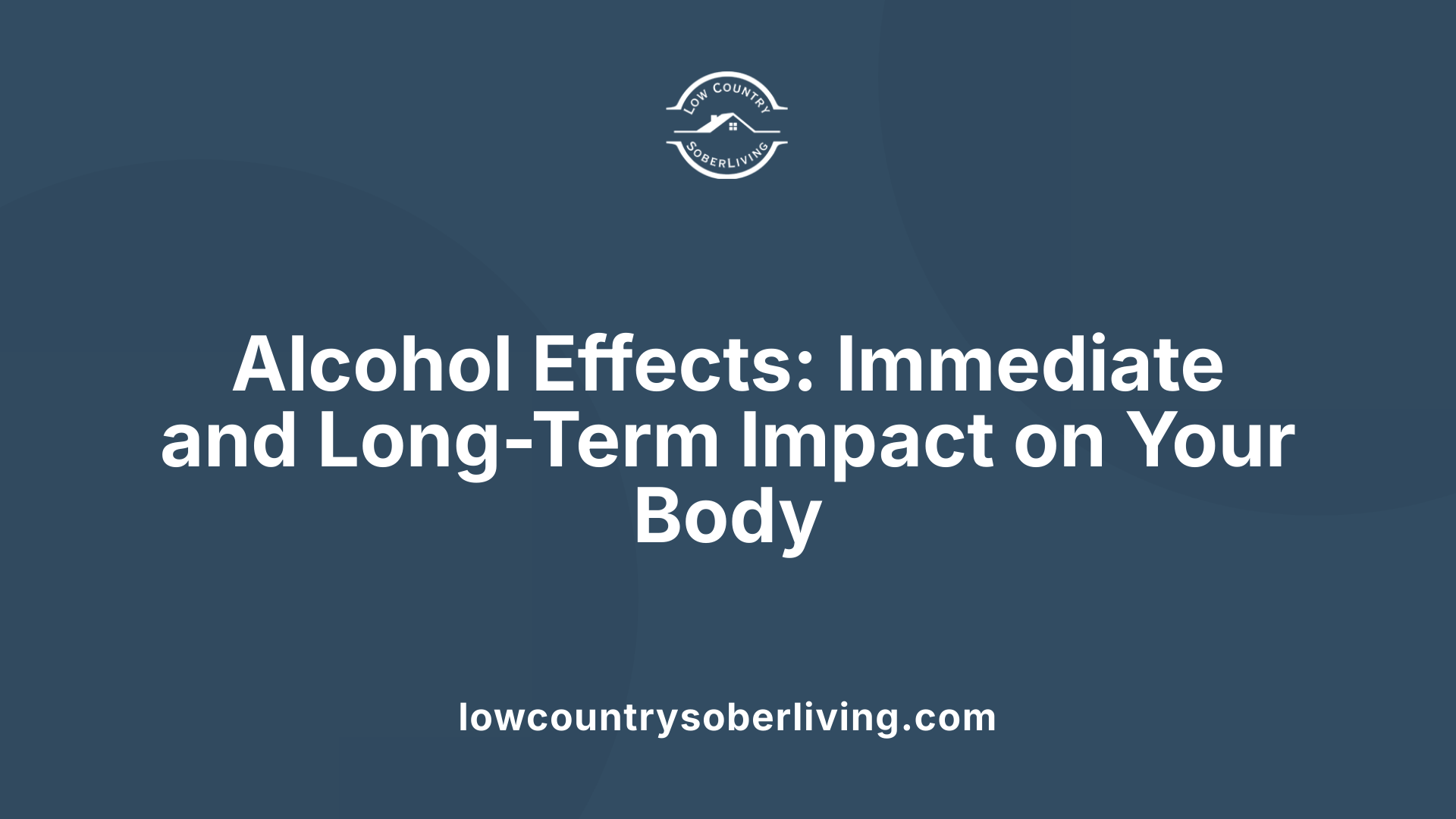
What are the immediate effects of alcohol consumption?
Alcohol's short-term effects are diverse and can be quite noticeable. When someone drinks, they may experience a hangover characterized by headaches, nausea, dehydration, and fatigue. Alcohol lowers inhibitions, which can lead to risky behaviors, conflict, or accidents. It also impairs coordination, decision-making, and reaction times, increasing the chances of falls, car accidents, or other injuries.
In cases of excessive drinking over a short period, individuals risk alcohol poisoning, which can be life-threatening and requires immediate medical attention. On a behavioral level, alcohol can cause mood swings, dizziness, blurred vision, and slurred speech. On the social front, alcohol often leads to conflicts or unsafe sexual behaviors. On a neurological level, alcohol interferes with brain communication pathways, affecting mood, behavior, and motor functions.
Another significant immediate concern is binge drinking, which involves consuming a large amount of alcohol in a short period. For women and older adults over 65, binge drinking typically means four or more drinks at once, and for men, five or more. Such episodes can lead to conditions like alcohol poisoning, reckless behavior, and accidents. Moreover, on any single occasion, drinking heavily significantly increases the risk of injuries, violence, and legal issues.
What are the long-term health consequences of alcohol use?
Chronic alcohol consumption can profoundly impact almost every organ system in the body. It is linked to over 200 disease and injury types, including various cancers, liver diseases, heart conditions, and mental health issues.
Many cancers are associated with alcohol, such as liver, breast, esophageal, oral cavity, and colorectal cancers. The carcinogenic effect of alcohol can begin with even low levels of drinking but is more pronounced with greater and longer-term use.
The liver is particularly vulnerable; heavy drinking can cause fatty liver, hepatitis, fibrosis, cirrhosis, and liver cancer. The heart is also affected, with chronic heavy drinking leading to high blood pressure, irregular heartbeat, cardiomyopathy, and an increased risk of stroke and myocardial infarction.
Alcohol weakens the immune system, making the body more susceptible to infections such as pneumonia and tuberculosis. It can damage the brain, leading to cognitive deficits, memory loss, and increased risk for dementia. Mental health problems, including depression, anxiety, and dependence, are also common among long-term drinkers.
Furthermore, alcohol contributes to gastrointestinal issues like gastritis, ulcers, and a 'leaky gut,' and increases the risk of pancreatitis, a painful inflammation that also elevates the chances of diabetes and pancreatic cancer. It impairs bone health, leading to osteoporosis, and causes nerve damage or peripheral neuropathy.
Are there risks associated with daily alcohol consumption?
Yes, drinking alcohol every day, especially in excess, is associated with numerous health risks. It increases the likelihood of liver diseases, such as steatosis, hepatitis, and cirrhosis. Chronic daily drinking is also linked to cardiovascular diseases, including hypertension, irregular heartbeats, and stroke.
Beyond physical health, daily alcohol use can impair mental health, leading to depression, anxiety, and cognitive issues. It also heightens the risk of developing alcohol dependence or addiction, characterized by cravings, tolerance, withdrawal symptoms, and increased consumption despite negative consequences.
On an individual level, daily drinking can deteriorate personal relationships, cause work-related problems, and lead to social and legal issues. It further weakens the immune system, heightening vulnerability to infections, and contributes to cancer risks.
Seeking support through professional help or helplines can be an essential step for those struggling with daily drinking habits.
Are daily drinkers considered alcoholics?
Not necessarily. While daily alcohol consumption might raise concern about dependence, not all daily drinkers are classified as alcoholics. The clinical diagnosis of alcohol use disorder (AUD) or alcoholism involves criteria like a persistent desire to drink, inability to control consumption, cravings, tolerance, withdrawal symptoms, and neglect of responsibilities.
Some individuals may drink daily but do not meet all these criteria and might not be considered addicted. However, habitual daily drinkers are at increased risk of developing dependence over time, especially if their drinking pattern involves heavy or binge episodes, or if it adversely impacts their health and personal life.
In summary, regular daily drinking warrants careful assessment, but it only qualifies as alcoholism if specific behavioral and physiological signs are present.
Signs and Symptoms of Alcohol Use Disorder and Dependence
Are daily drinkers considered alcoholics?
Daily drinking does not automatically qualify someone as an alcoholic. However, it can be a sign of developing dependence if accompanied by other behaviors and symptoms. Consistently drinking every day might suggest that the person has formed a habit or possibly a dependence, especially if they show signs such as craving alcohol, needing more to feel the same effects (tolerance), experiencing withdrawal symptoms like shakiness or nausea when not drinking, or prioritizing alcohol over responsibilities and personal relationships.
The clinical diagnosis of alcohol use disorder (AUD), often referred to as alcoholism, involves meeting at least two specific criteria within a year. These include a strong desire or compulsion to drink, difficulty controlling or stopping alcohol use, and continued drinking despite negative consequences. Importantly, not everyone who drinks daily is an addict—some may do so without meeting the criteria for AUD.
Heavy and regular alcohol consumption increases the likelihood of developing dependence, which can lead to significant health issues, mental health conditions like depression and anxiety, and social problems. Still, individual patterns vary. Some people might enjoy a daily drink in moderation without developing signs of dependence, while others may gradually develop a problematic pattern of use.
In summary, whether daily drinking is considered alcoholism depends on the pattern, behaviors, and consequences associated with it. Monitoring for other signs and seeking professional evaluation when concerns arise is recommended to identify and address potential alcohol-related problems early.
What are the signs and symptoms of alcohol abuse?
Alcohol abuse and dependence manifest through various physical, behavioral, and mental health signs. Recognizable symptoms include cravings, which reflect a strong desire to drink, and increased tolerance, meaning the individual needs more alcohol to experience the same effects.
Withdrawal symptoms are also common and may include shakiness, sweating, nausea, or nervousness when not consuming alcohol. Despite these issues, many continue drinking, often to avoid withdrawal discomfort or because of psychological dependence.
Behaviorally, individuals might hide their drinking, lie about their alcohol intake, or continue drinking despite causing harm to relationships, jobs, or personal responsibilities. They may neglect family, social commitments, or work obligations in favor of alcohol.
Physical signs can include slurred speech, poor coordination, liver disorders like hepatitis or fatty liver, neurological issues, or physical injuries resulting from accidents or falls.
Mental health impacts are equally significant. Mood swings, irritability, depression, and anxiety are frequently observed, often worsening as alcohol dependence develops.
Early recognition of these symptoms is vital. Seeking professional help can lead to successful recovery, reduce health risks, and restore well-being. Addressing alcohol abuse early minimizes long-term damage and improves treatment outcomes.
Strategies for Reducing and Managing Daily Alcohol Intake
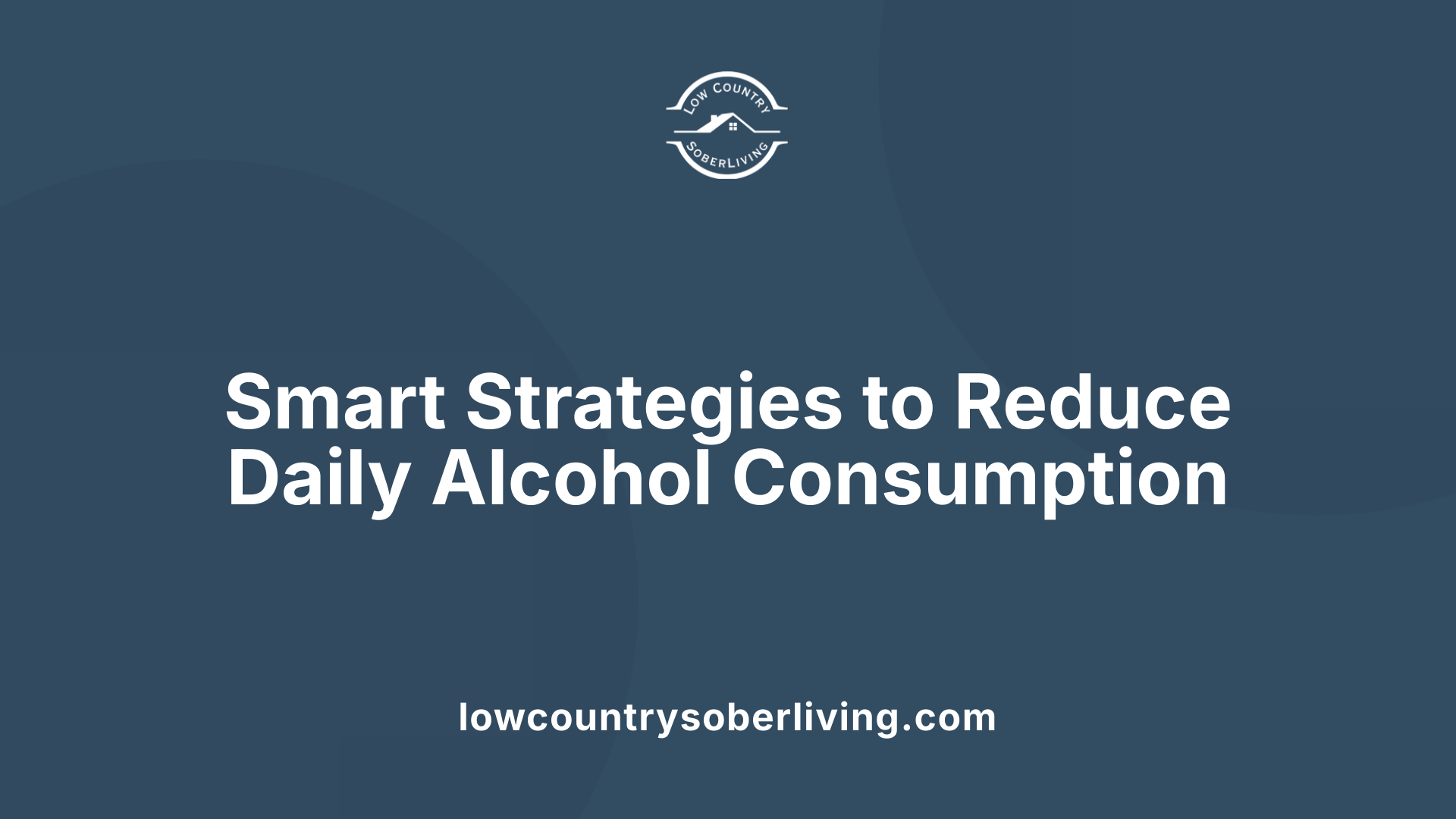
How can one reduce alcohol consumption?
Reducing alcohol intake involves a combination of mindful planning and behavioral adjustments. One effective approach is setting clear, manageable limits based on health guidelines. For example, many health authorities recommend that women consume no more than three drinks per day and seven drinks per week, while men should aim for no more than four drinks per day and 14 per week. Tracking daily intake aids in staying within these limits and promotes awareness of drinking habits.
Implementing alcohol-free days during the week can significantly lower overall consumption and reduce health risks. Replacing drinking routines with alternative activities encourages healthier habits. Activities such as outdoor walks, engaging hobbies, or socializing in environments where alcohol isn’t present help manage urges to drink.
Identifying triggers—such as stress, social pressures, or certain settings—that lead to drinking is crucial. Once recognized, strategies like stress management techniques, setting boundaries, or avoiding specific environments can be employed.
For those finding it difficult to cut back, seeking support from healthcare professionals is beneficial. Counseling, behavioral therapies like cognitive-behavioral therapy (CBT), and medication-assisted treatments (such as naltrexone or acamprosate) can support reduction goals.
Patience and self-compassion are vital. Slip-ups are common during behavior change, so maintaining a positive outlook and ongoing motivation increases the likelihood of success. Remember, gradual reduction is often more sustainable than abrupt cessation for many individuals.
What are effective treatment options for alcohol dependence?
Treating alcohol dependence requires a comprehensive, individualized approach that addresses both physical and psychological aspects of addiction. Inpatient programs provide intensive medical supervision and detoxification, especially for severe dependence, ensuring safety and structured support.
Outpatient treatment offers flexibility and ongoing therapy while allowing individuals to remain in their community. Behavioral therapies, like cognitive-behavioral therapy (CBT), help identify and modify thoughts and behaviors related to alcohol use. Motivational interviewing encourages individuals to explore and reinforce their commitment to quitting.
Support groups, such as Alcoholics Anonymous (AA), provide peer support, shared experiences, and accountability. These are often integrated into long-term recovery plans.
Medications can play a crucial role in managing cravings and preventing relapse. Naltrexone reduces the pleasurable effects of alcohol, acamprosate helps stabilize brain chemistry, and disulfiram prompts unpleasant reactions when alcohol is consumed.
Developing a strong support system is also essential. Family therapy and ongoing aftercare programs bolster long-term sobriety.
Addressing underlying mental health issues, such as depression or anxiety, improves treatment outcomes. Customized treatment plans that combine medication, therapy, and support networks offer the best chance for sustained recovery.
Ongoing management, relapse prevention strategies, and continued engagement with healthcare providers are critical for overcoming dependence and maintaining long-term health and well-being.
| Topic | Description | Additional Notes |
|---|---|---|
| Setting Limits and Tracking | Establishing daily and weekly drinking boundaries; keeping a consumption log. | Helps stay aware and motivated. |
| Alternative Activities and Coping Strategies | Engaging in hobbies, outdoor activities, or social interactions without alcohol. | Distracts from urges; supports mental health. |
| Professional Treatment Options | Involves detox, therapy, medication, and support groups tailored to individual needs. | Enhances chances of successful recovery. |
Reversibility of Alcohol-Related Damage and Prevention
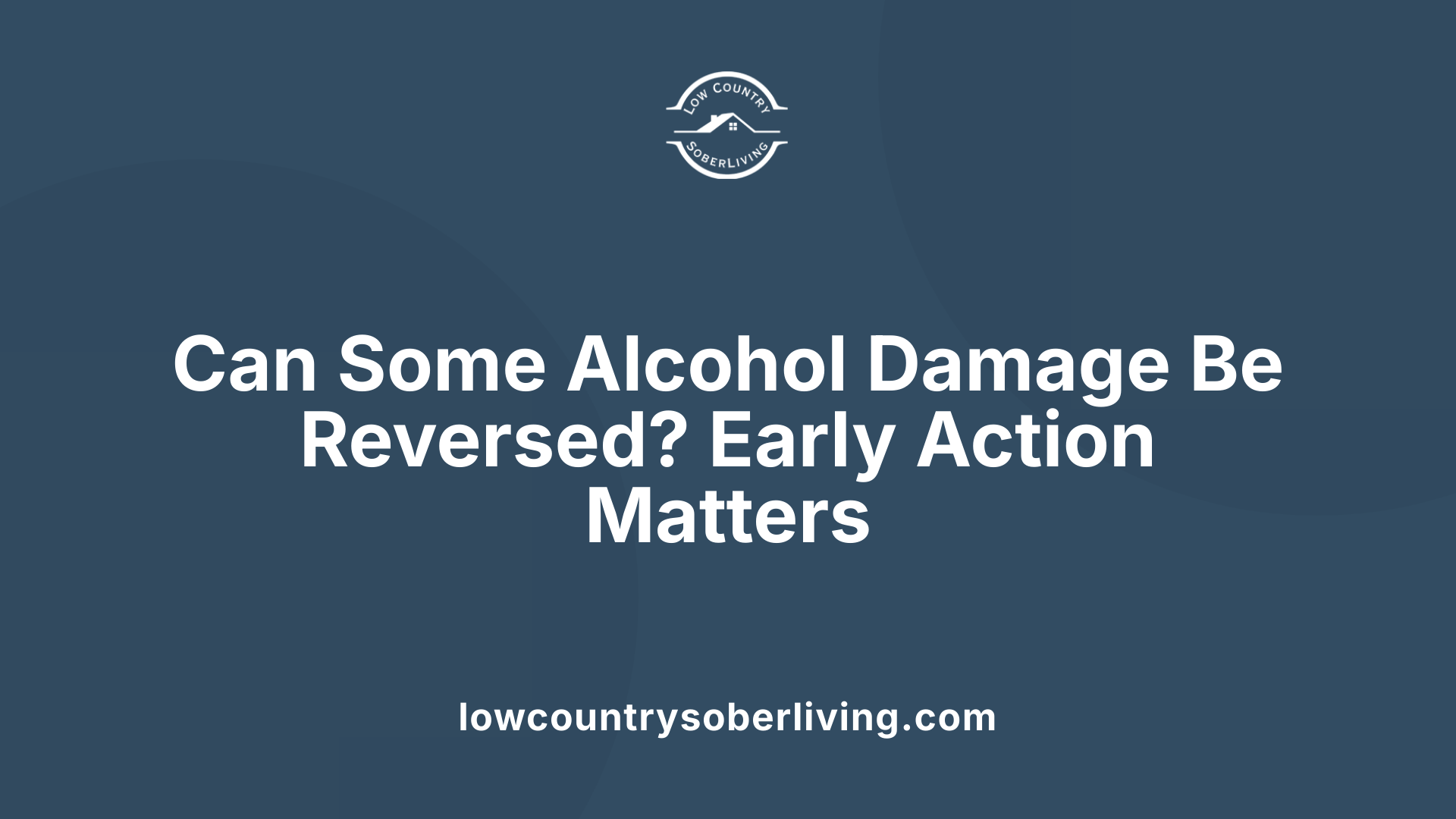
Can health damage from daily alcohol use be reversed?
Some health issues caused by daily alcohol consumption, particularly in the early or mild stages, have the potential for reversal if addressed promptly. For instance, fatty liver, a common consequence of excessive drinking, can often be fully cured within a few weeks of abstinence from alcohol. This highlights the importance of early detection and immediate lifestyle changes.
Neurological and cognitive impairments, such as memory problems or mild brain damage, may also improve with sustained sobriety and medical treatment. The immune system and cardiovascular health can recover over time if alcohol consumption is reduced or stopped, leading to a lower risk of infections and heart disease.
However, certain damages—like liver cirrhosis, significant brain injury, or some types of cancer—may be permanent once they have established. The extent of reversibility depends on the severity and duration of alcohol misuse.
Early intervention, continuous abstinence, and comprehensive healthcare can maximize the possibility of recovery. Understanding that some damage may be irreversible underscores how crucial it is to seek help early and modify drinking habits before severe health deterioration occurs.
The Public Health Perspective and Guidelines
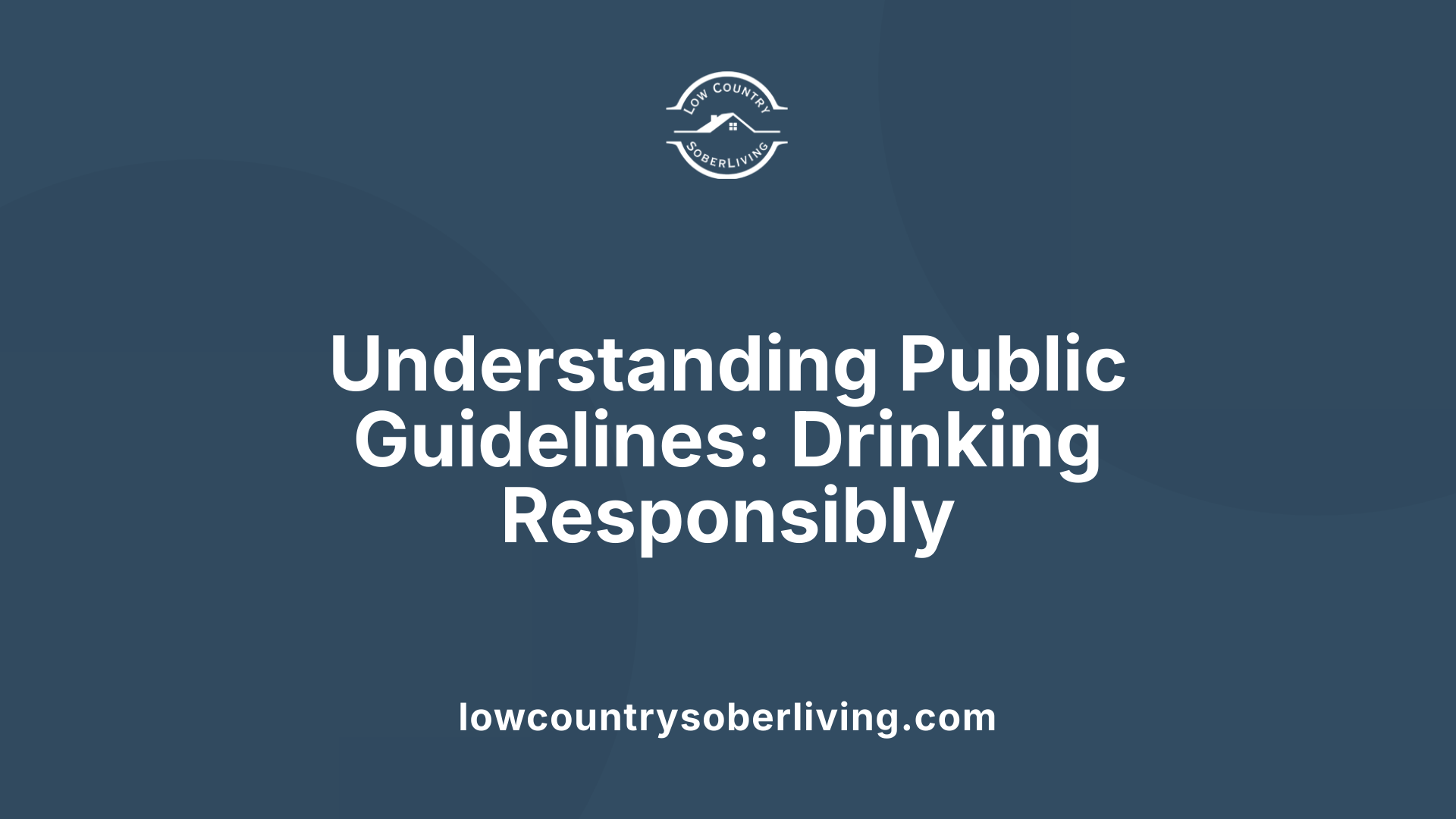
Are drinking alcohol every night and excessive drinking normal?
Drinking alcohol every night is not necessarily a sign of good health or normal behavior. While some research suggests that moderate alcohol consumption—up to one drink per day for women and two for men—may offer slight cardiovascular benefits, exceeding these limits can significantly increase health risks.
Engaging in nightly drinking beyond moderate levels often indicates problematic or risky drinking habits. Such patterns can develop into alcohol dependence, leading to serious health issues such as liver disease, cardiovascular problems, mental health conditions, or addiction.
It’s important to understand personal tolerance levels and adhere to established guidelines to minimize harm. Most health experts agree that occasional or moderate drinking aligns with acceptable health standards, but habitual, daily overconsumption should be avoided to protect long-term health.
Overall, occasional moderate drinking might be acceptable for some, but daily heavy drinking is neither normal nor safe for most people.
Is it harmful to drink alcohol daily?
Consuming alcohol daily is linked to increased health risks, especially when intake exceeds recommended limits. Although moderate daily drinking can sometimes reduce the risk of heart disease, these potential benefits are outweighed by the increased likelihood of developing other serious health problems.
Research consistently shows that alcohol consumption—even in small amounts—raises the risk of various cancers including breast, colon, and esophageal cancers. It also increases the risk of stroke, high blood pressure, and premature death.
Most health authorities have revised their guidelines, emphasizing that there is no completely safe level of alcohol consumption. They recommend limiting intake as much as possible.
Guidelines suggest that women should not regularly consume more than one drink per week, and men no more than two. Abstaining from alcohol or reducing intake to very low levels is the safest option for health maintenance.
What happens if a person drinks alcohol every day?
Drinking alcohol daily, especially in larger quantities, can lead to a series of adverse health outcomes. The liver is particularly vulnerable—long-term heavy daily drinking can cause fatty liver, inflammation, fibrosis, and eventually cirrhosis.
Similarly, consistent alcohol use can impair the cardiovascular system, resulting in high blood pressure, irregular heartbeat, and increased risk for strokes and heart failure.
On a mental health level, daily drinking is associated with depression, anxiety, and cognitive decline. It significantly raises the likelihood of developing alcohol dependence, which can cause withdrawal symptoms like shakiness, sweating, nausea, and cravings.
Moreover, daily alcohol consumption elevates the risk of various cancers, including liver and breast cancers, and weakens the immune system, making individuals more susceptible to infections.
Social and personal consequences are also common—such patterns often contribute to deteriorating relationships, reduced work productivity, and financial hardship.
Recovery from daily alcohol use can be achieved with medical support, counseling, and behavioral therapy, but cessation should ideally be supervised by healthcare professionals to handle withdrawal safely.
Summarizing the public health guidelines and recommendations
Health authorities worldwide advocate for responsible alcohol use or abstinence. The Dietary Guidelines for Americans specify that for adults of legal drinking age, women should limit themselves to one drink per day, and men to two drinks.
A standard drink typically contains about 14 grams of pure alcohol, which equates to 12 ounces of beer, 5 ounces of wine, or 1.5 ounces of spirits.
For children, pregnant women, individuals on specific medications, or those with certain medical conditions, abstaining from alcohol is strongly recommended.
The goal of these guidelines is to reduce alcohol-related health risks, including cancers, cardiovascular diseases, liver conditions, and accidents.
How public health strategies address alcohol use
Effective strategies include policy measures like taxes on alcoholic beverages, restrictions on sales and advertising, and laws against drunk driving.
Educational campaigns aim to raise awareness about the risks of excessive drinking and promote moderation.
Screening and brief interventions by healthcare providers help identify risky drinking behaviors early. Treatment programs, including detoxification, counseling, and support groups, are crucial for those with alcohol dependence.
Implementing community and policy-based measures, along with public education, can significantly lower the prevalence of harmful alcohol use and improve overall population health.
| Aspect | Recommendations | Purpose | Additional Details |
|---|---|---|---|
| Drinking limits | Women: 1 drink/day, Men: 2 drinks/day | Minimize health risks | Based on age, health status, pregnancy |
| Binge drinking definition | 4+ drinks women, 5+ drinks men within 2 hours | Prevent acute health and safety incidents | Clear thresholds for risky behaviors |
| Alcohol education | Awareness campaigns, Safe drinking habits | Reduce risky consumption patterns | Include information on alcohol content and serving sizes |
| Policy measures | Taxes, advertising restrictions | Decrease alcohol availability and consumption | Evidence-based approaches to reduce harm |
| Screening and treatment | Healthcare-based programs | Early detection and support for dependence | Combining behavioral and medical interventions |
| Special populations | Abstain: Pregnant women, youth, medical conditions | Protect vulnerable groups | Emphasize that no safe alcohol level exists for these groups |
Final thoughts
Overall, reducing alcohol consumption aligns with improving public health. Following guidance from reputable health organizations helps individuals make informed choices and avoid preventable health problems. Education about the risks, combined with effective policy measures, plays a critical role in fostering a healthier society where alcohol-related harms are minimized.
Key Takeaways and Final Thoughts
Regular alcohol consumption every day can lead to a host of health issues, including liver damage, cardiovascular problems, and mental health disorders. While moderate drinking may carry some benefits, exceeding recommended limits significantly raises risks. Recognizing the signs of alcohol dependence early and seeking appropriate treatment can make a substantial difference. Public health policies emphasize moderation, education, and early intervention to reduce alcohol-related damage. Ultimately, informed choices, awareness of personal health conditions, and adherence to guidelines are vital to minimize harm and promote overall well-being.
References
- How alcohol affects your body | Better Health Channel
- Alcohol's Effects on the Body
- Mayo Clinic Q and A: Is daily drinking problem drinking?
- The risks of drinking too much - NHS
- Limit Alcohol - National Center for Health Promotion and Disease ...
- About Moderate Alcohol Use - CDC
- I drink every night – Am I an alcoholic? - Priory Group
- The Basics: Defining How Much Alcohol is Too Much
- Can You Reverse Alcohol Damage? Reversing the Effects of Alcohol
- Is drinking alcohol part of a healthy lifestyle?

